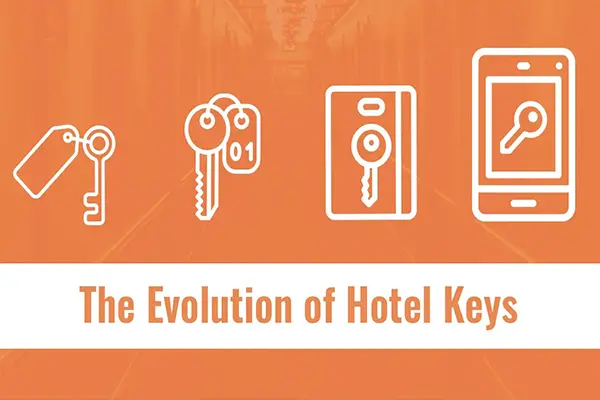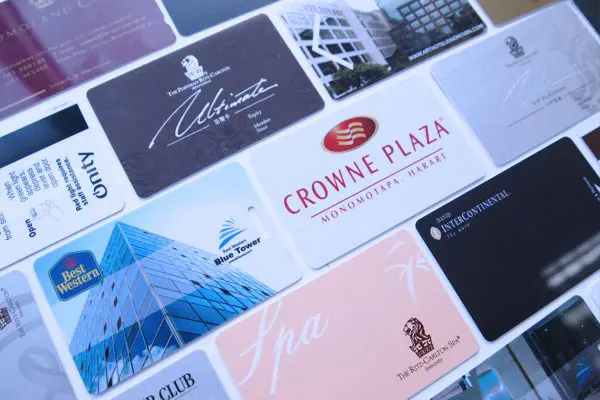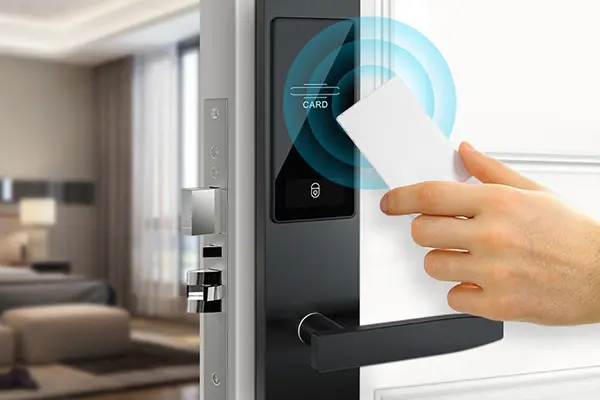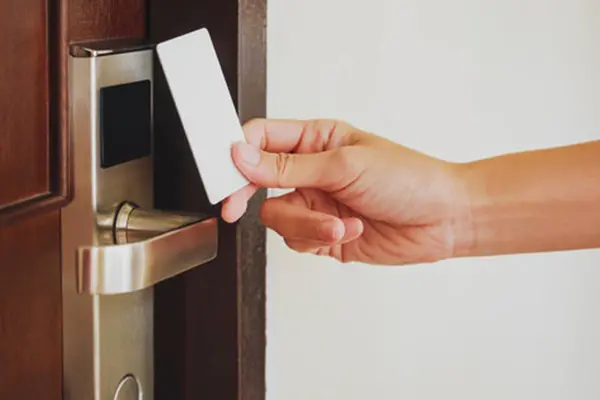Unlocking the Secrets: A Behind-the-Scenes Look at How Hotel Key Cards Work
Welcome to the fascinating world of hotel key cards, where a small piece of plastic holds the power to unlock an entire world of luxury and comfort. Have you ever wondered how these clever devices work? Join us on a captivating journey as we peel back the layers and reveal the secrets behind hotel key cards. From the intricate technology hidden within their compact design to the seamless integration with hotel security systems, we will explore every aspect of these unassuming cards. Discover the cutting-edge encryption algorithms that protect your personal information and the innovative ways hotels are utilizing key cards to enhance guest experiences. Whether you’re a curious traveler or a tech enthusiast, this behind-the-scenes look will leave you amazed by the ingenuity and sophistication behind the simple act of unlocking your hotel room door. So, grab your key card and prepare to be enlightened as we unravel the mysteries of this essential travel companion.
What are hotel key cards?

Hotel key cards are the modern-day equivalent of traditional metal keys. These small plastic cards serve as an electronic access device that allows guests to unlock their hotel room doors. The key card contains a magnetic stripe or a smart chip, which stores encrypted information that corresponds to a specific room within the hotel. When a guest inserts or swipes the key card into the electronic card reader on the door, it communicates with the hotel’s central database to verify the guest’s authorization and grant access. This seamless process makes key cards a convenient and efficient alternative to traditional metal keys.
Hotel key cards have revolutionized the hospitality industry since their introduction in the 1970s. Before key cards became popular, hotels relied on physical keys, which were bulky, easily lost, and required manual lock changes when a guest lost their key. Key cards, on the other hand, offer numerous advantages, such as enhanced security, ease of use, and the ability to track guest activity. As technology continues to advance, key cards are becoming even more sophisticated, incorporating features like contactless entry and mobile key options.
The evolution of hotel key cards

The journey of hotel key cards began with the introduction of magnetic stripe cards in the 1970s. These cards featured a magnetic stripe on the back, which contained the encoded information necessary for room access. They were significantly more secure and convenient compared to traditional metal keys, but they had their limitations. Magnetic stripe cards were susceptible to demagnetization, rendering them useless if they came into contact with magnetic objects, such as cell phones or credit cards.
To address these limitations, hotels started adopting smart chip technology in the late 1990s. Smart chip cards, also known as RFID (Radio Frequency Identification) cards, utilize embedded microchips to store and transmit data wirelessly. The chips communicate with card readers using radio waves, eliminating the need for physical contact and reducing the risk of demagnetization. This advancement in technology marked a significant milestone in the evolution of hotel key cards, paving the way for even more secure and convenient access solutions.
How do hotel key cards work?

Hotel key cards rely on a combination of sophisticated technology and seamless integration with hotel security systems to provide secure and efficient access control. The process begins when a guest checks in and receives their key card. The front desk staff associates the key card with the guest’s room in the hotel’s central database, ensuring that only authorized individuals can access the assigned room.
When a guest approaches their hotel room door, they insert or swipe the key card into the electronic card reader. The reader then reads the encoded information stored on the magnetic stripe or smart chip. This information is encrypted and unique to each guest and room. The reader sends the encoded information to the hotel’s central database for verification. If the information matches the guest’s assigned room, the database grants access, and the door unlocks.
Types of hotel key cards

Hotel key cards come in various types, each with its own unique features and advantages. The most common types include magnetic stripe cards, smart chip cards, and contactless key cards.
Magnetic stripe cards are the oldest and simplest type of hotel key cards. They feature a magnetic stripe on the back, which contains the encoded information necessary for room access. These cards are cost-effective and widely compatible with existing card reader systems. However, they are more prone to demagnetization and require physical contact with the reader.
Smart chip cards, also known as RFID cards, utilize embedded microchips to store and transmit data wirelessly. These cards offer enhanced security and are less susceptible to demagnetization compared to magnetic stripe cards. They also support contactless entry, allowing guests to simply tap the card on the reader instead of inserting or swiping.
Contactless key cards take convenience to the next level by utilizing Near Field Communication (NFC) technology. With contactless key cards, guests can unlock their hotel room doors by simply holding the card near the reader, without the need for physical contact. This technology offers a seamless and hygienic experience, especially in today’s health-conscious world.
Learn more about our hotel key cards.
Security measures in hotel key cards

Security is a top priority in the hospitality industry, and hotel key cards are no exception. These small pieces of plastic incorporate advanced encryption algorithms to protect guest information and ensure secure access control.
Magnetic stripe cards use simple encoding techniques to store information on the magnetic stripe. However, this method is vulnerable to unauthorized duplication or tampering. To address these concerns, smart chip cards were introduced. The embedded microchips in smart chip cards offer advanced encryption and authentication capabilities, making them more secure than magnetic stripe cards.
In addition to encryption, hotels implement other security measures to protect against card cloning or unauthorized access. These measures include secure key card printing processes, unique identification codes, and regular re-encoding of key cards to prevent duplication. Hotels also use secure card reader systems that communicate with the hotel’s central database to verify the card’s authenticity and authorization.
Advantages of hotel key cards over traditional keys
Hotel key cards offer several advantages over traditional metal keys, making them a preferred choice for hotels worldwide. One of the primary advantages is convenience. Key cards are small and lightweight, making them easy to carry and less likely to be lost compared to bulky metal keys. They also eliminate the need for manual lock changes when a guest loses their key, saving time and resources for the hotel staff.
Another advantage of hotel key cards is enhanced security. Traditional metal keys can be easily duplicated or lost, posing a security risk for guests. Key cards, on the other hand, utilize advanced encryption algorithms and authentication methods, making them more difficult to duplicate or tamper with. Hotels can also track guest activity through key card usage, providing an additional layer of security and accountability.
Key cards also offer flexibility and versatility. Hotels can easily reprogram key cards to grant temporary access or restrict access to certain areas, such as fitness centers or executive floors. This flexibility allows hotels to provide personalized experiences for their guests and ensure their safety and comfort.
Common issues with hotel key cards and how to troubleshoot

While hotel key cards offer numerous benefits, they are not without their challenges. Guests may encounter common issues with key cards, such as demagnetization, card reader malfunctions, or programming errors. Fortunately, most of these issues can be easily resolved with a few troubleshooting steps.
If a key card becomes demagnetized and fails to unlock the door, guests can usually resolve the issue by visiting the front desk for a replacement card. To prevent demagnetization, guests should avoid placing their key cards near magnetic objects, such as cell phones, credit cards, or other electronic devices. It’s also a good idea to store the key card separately from other cards or objects that may cause interference.
If the card reader fails to read the key card, guests can try cleaning the magnetic stripe or the chip using a soft cloth. Dust or debris on the card reader can also interfere with the reading process, so guests should ensure the reader is clean and free from obstructions. If the issue persists, guests can contact the hotel’s front desk for assistance or request a new key card.
Programming errors can occasionally occur, resulting in key cards that do not grant access to the assigned room. In such cases, guests should contact the front desk to have the key card reprogrammed or replaced. Hotel staff are trained to handle these issues efficiently and ensure that guests have a smooth and hassle-free experience.
Future trends in hotel key card technology

As technology continues to advance, hotel key card technology is expected to evolve and introduce new features and capabilities. One of the most significant trends is the adoption of mobile key solutions. With mobile key technology, guests can use their smartphones as virtual key cards, eliminating the need for physical cards altogether. This technology offers a seamless and contactless experience, allowing guests to unlock their hotel room doors using their smartphones’ Bluetooth or NFC capabilities.
Another future trend is the integration of key cards with other hotel services and amenities. Hotels are exploring ways to utilize key cards for more than just room access. For example, key cards can be used to access fitness centers, and spas, or even make payments within the hotel premises. This integration streamlines the guest experience and enhances convenience, making key cards a versatile tool for hotels.
In terms of security, hotels are continuously improving encryption algorithms and authentication methods to stay ahead of potential threats. Future key cards may incorporate biometric authentication, such as fingerprint or facial recognition, to provide an additional layer of security and ensure that only authorized individuals can access the rooms.
Conclusion: The future of hotel key cards
Hotel key cards have come a long way since their introduction, revolutionizing the way guests access their hotel rooms. From magnetic stripe cards to contactless key cards, these small plastic devices have continuously evolved to provide enhanced security, convenience, and versatility. The future of hotel key cards looks promising, with advancements in mobile key technology, integration with other hotel services, and improved security measures. As travelers continue to seek seamless and personalized experiences, hotel key cards will remain an essential travel companion, unlocking a world of luxury and comfort with a simple swipe or tap. So, the next time you check into a hotel, take a moment to appreciate the ingenuity behind that unassuming piece of plastic in your pocket – your key to a memorable stay.
Nexqo also provides eco-friendly key cards solution to meet different clients’ requirements. Learn more about the sustainable key cards available at Nexqo.
.png)
